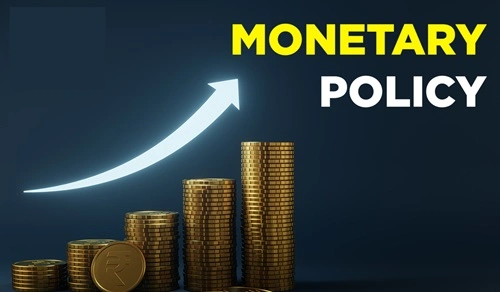Monetary policy is a critical tool for managing an economy’s liquidity, inflation, and overall growth. In India, the Reserve Bank of India (RBI) is tasked with formulating and implementing monetary policy, ensuring price stability, controlling inflation, and fostering sustainable economic growth. This article delves into the advantages and disadvantages of monetary policy in the Indian context, providing insights into its role in shaping the economy.
Understanding Monetary Policy in India

Monetary policy involves the regulation of money supply and interest rates by the central bank to achieve macroeconomic objectives. The RBI employs various instruments to manage liquidity, inflation, and economic growth. These instruments are categorized into:
1. Quantitative Tools:
- Repo Rate and Reverse Repo Rate: The rates at which the RBI lends to and borrows from commercial banks.
- Cash Reserve Ratio (CRR): The percentage of a bank’s deposits required to be held with the RBI.
- Statutory Liquidity Ratio (SLR): The percentage of deposits banks must hold in liquid assets.
2. Qualitative Tools:
- Open Market Operations (OMO): Buying or selling government securities to influence liquidity.
- Moral Suasion: Persuading banks to follow specific monetary measures.
The primary goals of monetary policy in India include:
- Price stability.
- Economic growth.
- Employment generation.
- Controlling inflation and deflation.
- Stabilizing the currency.
Advantages of Monetary Policy in India
1. Control Over Inflation
Monetary policy is a powerful tool for controlling inflation in India. By adjusting the repo rate, the RBI can influence borrowing costs, thereby managing demand and price levels. For instance, during high inflation, the RBI raises interest rates to curb excessive demand, stabilizing prices.
2. Economic Growth Facilitation
In periods of economic slowdown, the RBI adopts an accommodative stance by reducing interest rates. This encourages borrowing and investment, fostering economic growth. The monetary easing measures during the COVID-19 pandemic supported businesses and individuals, helping the economy recover.
3. Ensures Price Stability
Price stability is crucial for maintaining consumer and investor confidence. The RBI uses monetary policy to target inflation within a specified range, currently set at 4% ± 2%. This focus on inflation targeting ensures a predictable economic environment.
4. Exchange Rate Stabilization
Monetary policy helps stabilize the exchange rate by managing liquidity and controlling capital flows. The RBI’s interventions in the foreign exchange market mitigate volatility, promoting investor confidence in the rupee.
5. Flexibility in Implementation
Monetary policy is relatively flexible and can be adjusted frequently to address economic changes. The RBI’s Monetary Policy Committee (MPC) meets bi-monthly to review and revise policy measures based on the prevailing economic conditions.
6. Promotion of Employment
By fostering economic growth, monetary policy indirectly promotes employment generation. Lower interest rates encourage businesses to expand, leading to job creation in various sectors.
7. Control of Money Supply
The RBI regulates the money supply through tools like CRR, SLR, and OMOs. This ensures adequate liquidity in the system while preventing excess money circulation, which could lead to inflation.
8. Encouragement of Savings and Investment
Monetary policy influences interest rates, affecting savings and investment behaviors. Higher rates encourage savings, while lower rates stimulate investment by reducing borrowing costs.
9. Independence of Central Bank
The RBI’s autonomy in monetary policy formulation allows it to take decisions free from political interference, ensuring a focus on long-term economic stability rather than short-term populist measures.
10. Effective Crisis Management
Monetary policy has proven effective in managing economic crises. During the global financial crisis of 2008 and the COVID-19 pandemic, the RBI implemented measures such as reducing repo rates, injecting liquidity, and restructuring loans to stabilize the economy.
Disadvantages of Monetary Policy in India
1. Time Lag in Implementation
Monetary policy decisions often face time lags between implementation and their impact on the economy. For instance, changes in interest rates take time to influence borrowing, investment, and consumption behaviors.
2. Limited Control Over Supply-Side Inflation
Monetary policy is less effective in addressing supply-side inflation caused by factors such as rising oil prices or supply chain disruptions. For example, during food or fuel price shocks, monetary tightening may not alleviate inflationary pressures.
3. Ineffectiveness in Informal Economy
India’s large informal sector reduces the effectiveness of monetary policy. Many businesses and individuals operate outside the formal banking system, limiting the policy’s reach and impact.
4. Risk of Over-Tightening
Excessive tightening of monetary policy to control inflation can stifle economic growth. High interest rates can deter borrowing and investment, leading to slower industrial expansion and job creation.
5. Dependency on Fiscal Policy
Monetary policy alone cannot address structural economic issues. It needs to be complemented by fiscal policy measures, such as government spending and taxation reforms, for holistic economic management.
6. Impact on Banking Sector Profitability
Frequent changes in monetary policy can affect the profitability of banks. For instance, a reduction in interest rates narrows the net interest margin, impacting banks’ earnings.
7. Speculative Capital Flows
Monetary policy changes can attract or deter foreign capital flows, leading to exchange rate volatility. For example, higher interest rates may attract short-term speculative capital, destabilizing the currency when such flows reverse.
8. Inequality in Credit Distribution
Despite monetary easing, credit often remains concentrated in urban and organized sectors, bypassing rural and small-scale industries. This inequality limits the broader impact of monetary policy on inclusive growth.
9. Potential for Stagflation
If monetary policy fails to address both inflation and unemployment simultaneously, it can lead to stagflation—a situation where the economy experiences stagnant growth alongside high inflation.
10. Limited Influence on Global Factors
India’s monetary policy has limited control over global economic factors such as crude oil prices, geopolitical tensions, and international capital flows. These factors can significantly impact inflation and currency stability.
Key Challenges in India’s Monetary Policy
- Balancing Growth and Inflation: Striking the right balance between stimulating growth and controlling inflation is a perennial challenge for the RBI.
- Transmission Mechanism: Ensuring that changes in policy rates are effectively transmitted to end borrowers remains an issue, as banks are often slow to adjust lending and deposit rates.
- Managing External Shocks: Global economic uncertainties, such as fluctuating crude oil prices or changes in US Federal Reserve policies, pose challenges to India’s monetary stability.
- Addressing Rural Credit Needs: Extending the reach of monetary policy to rural and unbanked areas requires deeper financial inclusion and better credit infrastructure.
Recent Developments in India’s Monetary Policy
- Inflation Targeting Framework: Introduced in 2016, this framework mandates the RBI to maintain inflation at 4% with a tolerance band of ±2%. This has enhanced policy credibility and investor confidence.
- COVID-19 Measures: During the pandemic, the RBI implemented accommodative measures, including reducing the repo rate to historic lows and introducing a moratorium on loan repayments.
- Digital Payments Ecosystem: The rise of digital payments and fintech in India has influenced monetary policy decisions, with the RBI focusing on improving payment infrastructure and financial inclusion.
Conclusion
Monetary policy is an indispensable tool in India’s economic management, offering flexibility and responsiveness to changing economic conditions. Its advantages, such as inflation control, economic growth stimulation, and crisis management, make it a cornerstone of macroeconomic policy. However, its limitations, including time lags, ineffectiveness in supply-side inflation, and limited reach in the informal sector, highlight the need for complementary fiscal measures and structural reforms.
For monetary policy to achieve its full potential, India must focus on improving financial inclusion, enhancing the transmission mechanism, and addressing global economic challenges. By aligning monetary policy with fiscal strategies and long-term developmental goals, India can ensure sustainable economic growth and stability.

